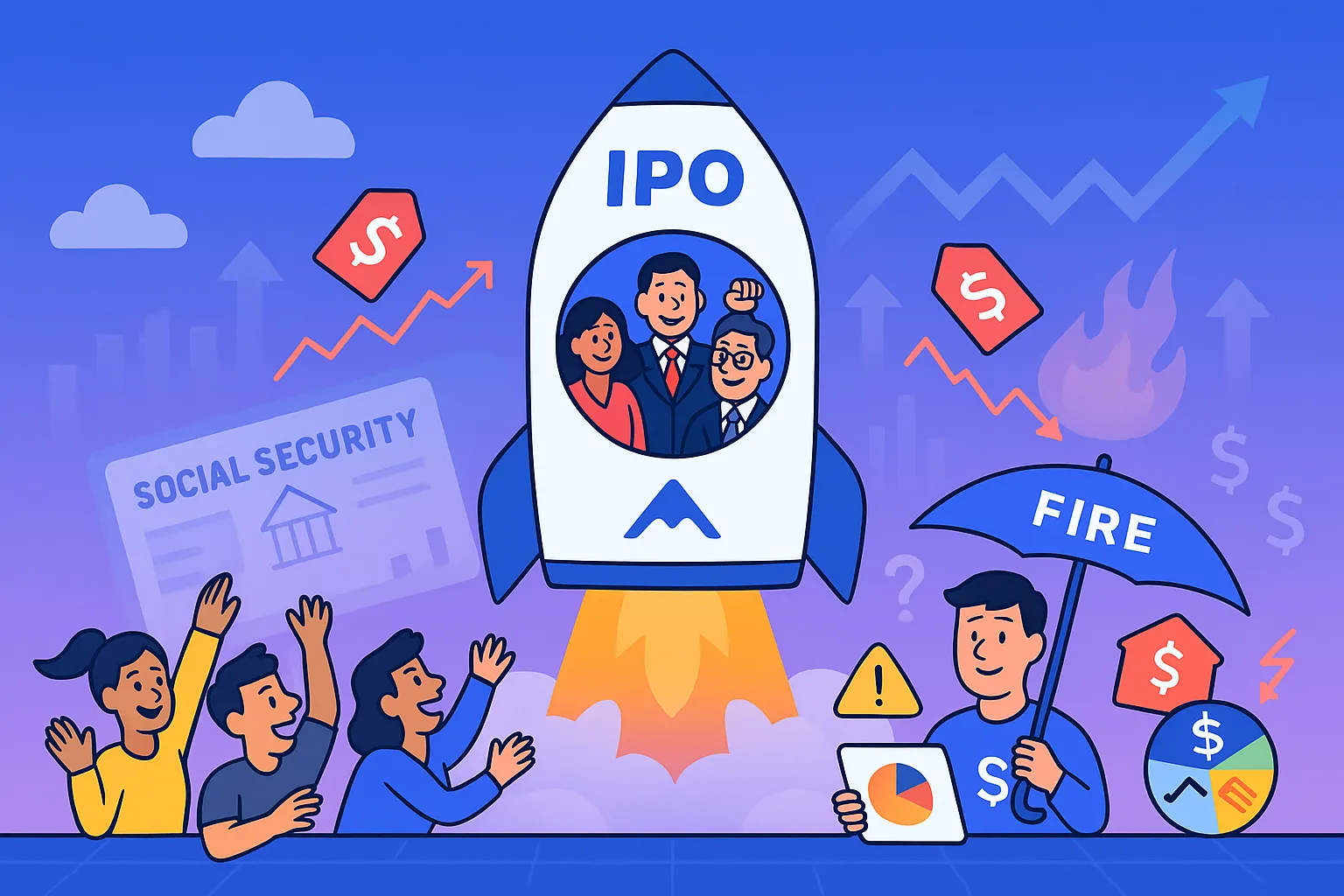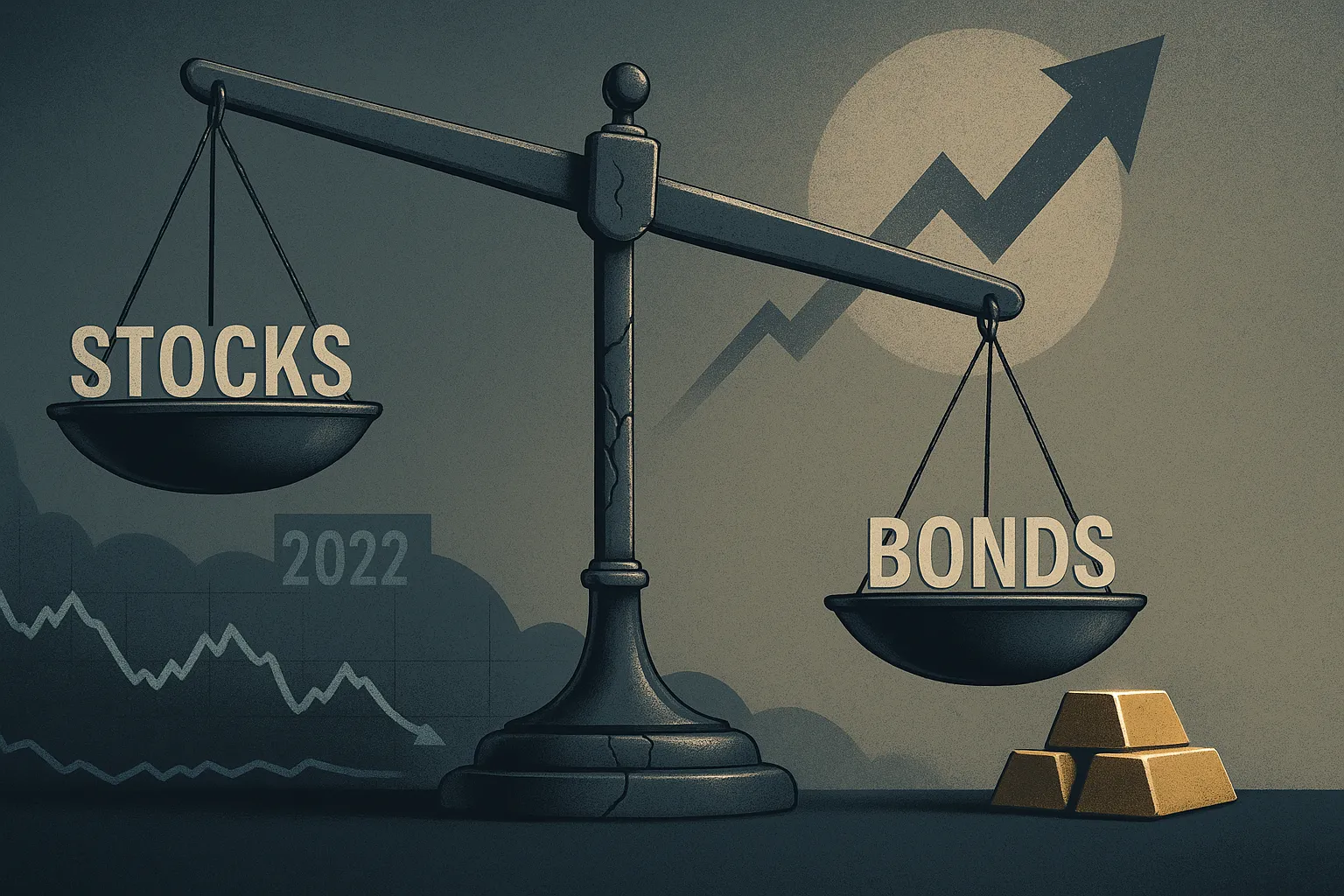Why Most IPOs Make Money – But Not for You
Retail buyers usually miss the early gains and face the risk of post-hype drops. Here's what to watch for before jumping in.

This content has been reviewed and edited by an Investment Advisor Representative working for Global Predictions, an SEC-registered Investment Advisor.
IPOs get all the headlines—skyrocketing first-day gains, celebrity CEOs ringing the opening bell, promises of "getting in early". But here’s the truth that doesn’t make it into the marketing material: a study published in the Journal of Financial Economics found that IPOs often benefit institutional investors far more than retail participants, who tend to get limited access and lower long-term returns.
While it's tempting to believe you’re catching the next Amazon or Google at the ground floor, the reality is much less generous. Many retail investors end up buying IPO shares after the initial pop—when the price is already inflated and the upside is limited.
So, do IPOs make investors rich? Sometimes—but it’s rarely the ones buying on day one.
Let’s unpack how IPOs work, who actually profits, and why long-term wealth usually comes from patience—not hype.
Key Takeaways
- IPOs often benefit early investors, insiders, and institutional buyers—not retail investors.
- Many IPOs drop in price within the first year after going public.
- Hype and scarcity can create inflated valuations that aren’t sustainable.
- Long-term gains are possible, but only in select cases.
What Is an IPO, Really?
An Initial Public Offering (IPO) is when a private company offers shares to the public for the first time. It’s how companies raise capital and give early investors a chance to cash out.
But here’s the catch: not all shares are created equal.
Who gets in early?
- Founders and employees (pre-IPO stock)
- Venture capital firms and private equity
- Institutional investors (banks, hedge funds, mutual funds)
Retail investors? They usually get access after the IPO begins trading publicly—at a price set by supply and demand, not by the company.
The First-Day Pop: Exciting, But Misleading
You’ll often hear stories like: “A hot new stock jumped 40% on its IPO day!” Sounds great, right?
But here’s what can happen (hypothetical example):
- Institutions buy shares at the IPO price of $20
- The stock opens for the public at $28, then closes at $30
That 50% gain? It mostly benefits those who bought at $20—not the investors who jumped in at $28 or later.
Real-world example: In 2020, Snowflake (SNOW) went public at $120—but retail traders were only allowed to buy starting at $245. It briefly soared, then dropped below $200 in the following months.
Long-Term Performance: Not as Strong as You’d Think
Research shows that IPOs tend to underperform the broader market over the 3 years post-IPO (International Journal of Scientific & Engineering Research).
Why? Many reasons, including:
- Overvaluation: IPOs are often priced aggressively to maximize returns for early backers.
- Lack of earnings history: Many IPOs are growth-oriented but unprofitable.
- Lock-up expirations: After six months, insiders can sell their shares—often causing downward pressure on the stock.
Who Actually Makes Money?
Winners:
- Venture capital and early-stage investors
- Founders and executives
- Underwriting banks
- Institutional investors who get pre-IPO allocations
Losers (Often):
- Retail investors buying during peak hype
- Short-term traders chasing volatility
The Psychology Trap: FOMO and Scarcity
IPOs are designed to feel exclusive. Limited access, big headlines, and short windows to buy—all push emotional buttons.
But emotional investing rarely ends well.
Chasing an IPO is like paying above sticker price for a new car—because everyone else is lined up to buy it.
Should You Ever Invest in an IPO?
Yes—but with caution.
Ask yourself:
- Do I understand the company’s fundamentals?
- Am I prepared to hold long-term if volatility hits?
- Is this company priced reasonably relative to earnings or revenue?
Some IPOs—like Google—did become fantastic long-term investments over the years. But they’re the exception, not the rule.
Many of today’s hyped IPOs (especially in tech) may not be profitable for years.
A Better Strategy for Many Investors
If you want to build real wealth, you might consider:
- Focusing on broad-market ETFs or individual companies with strong financials.
- Investing consistently through market cycles.
- Avoiding FOMO around trends or hype.
You don’t need to “get in early” to win—it might be better to just stay in and let time do the work.
FAQ
1. Can retail investors make money from IPOs?
Yes, but you should be cautious. Many of the early gains go to institutions and insiders who get in before the public.
2. Why do IPOs often drop after the first day?
Once the hype fades and lock-up periods expire, many stocks retrace as insiders sell and valuations normalize.
3. Should I avoid IPOs altogether?
Not necessarily—but do your homework, avoid emotional investing, and consider waiting until the price stabilizes after the hype fades.
How optimized is your portfolio?
PortfolioPilot is used by over 30,000 individuals in the US & Canada to analyze their portfolios of over $30 billion1. Discover your portfolio score now:





